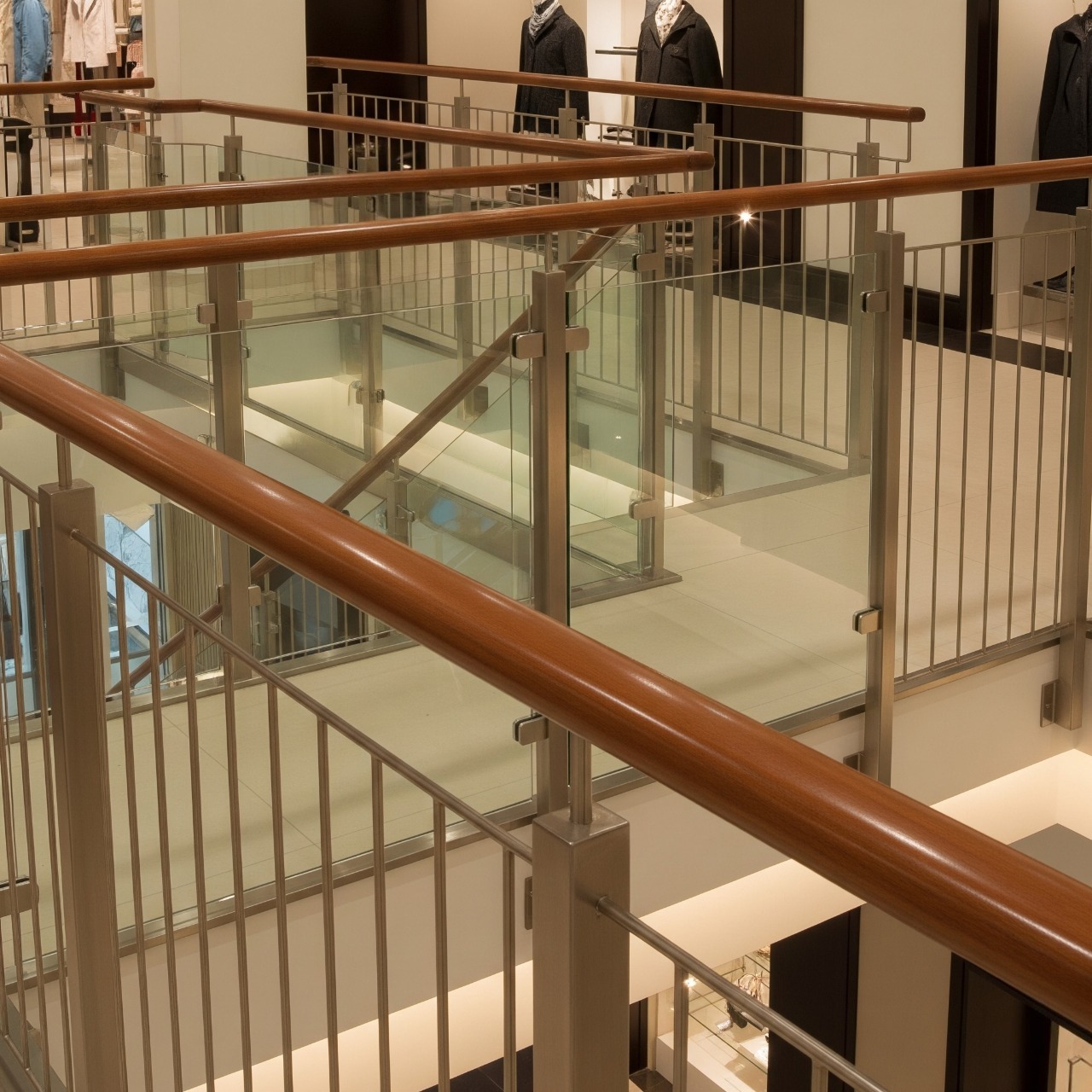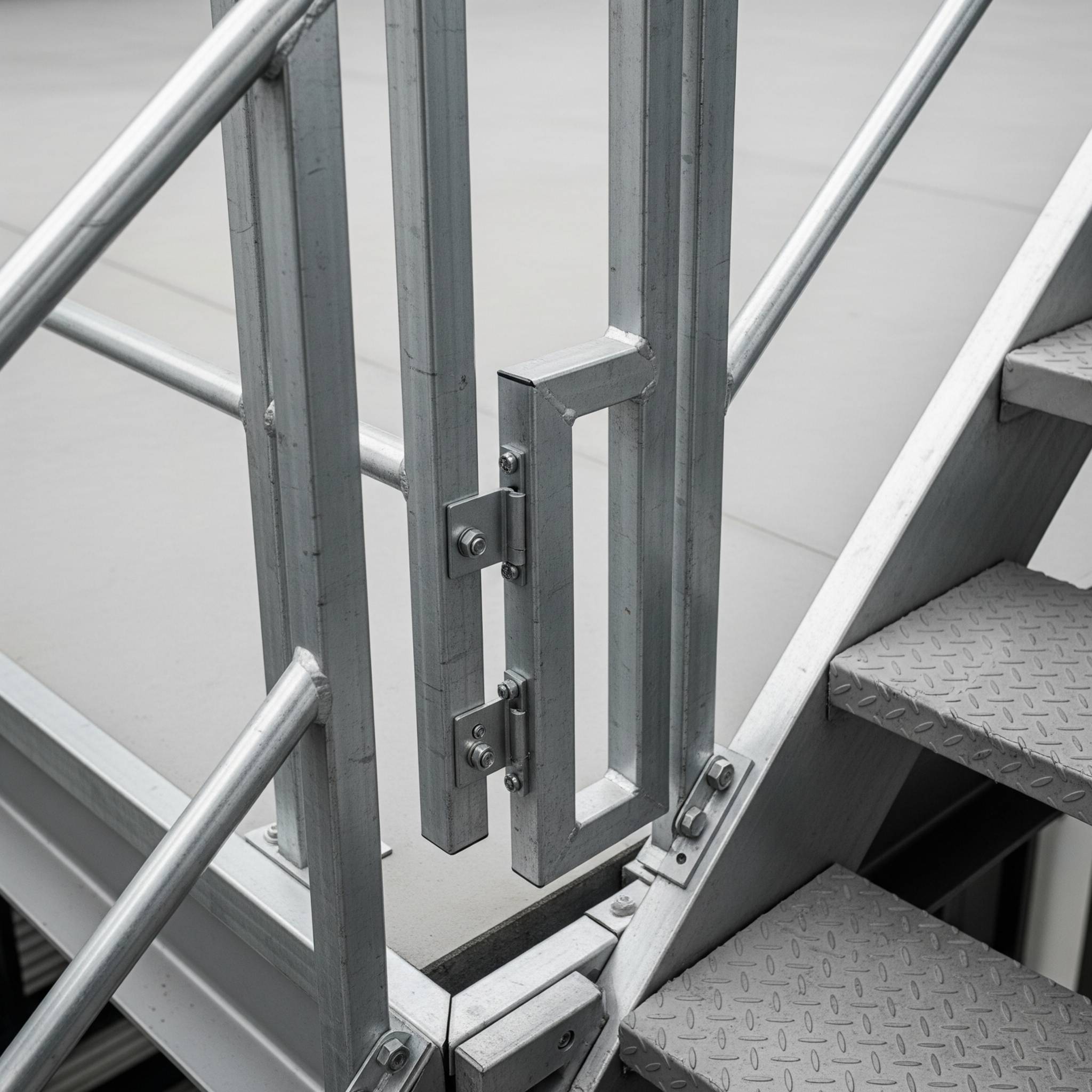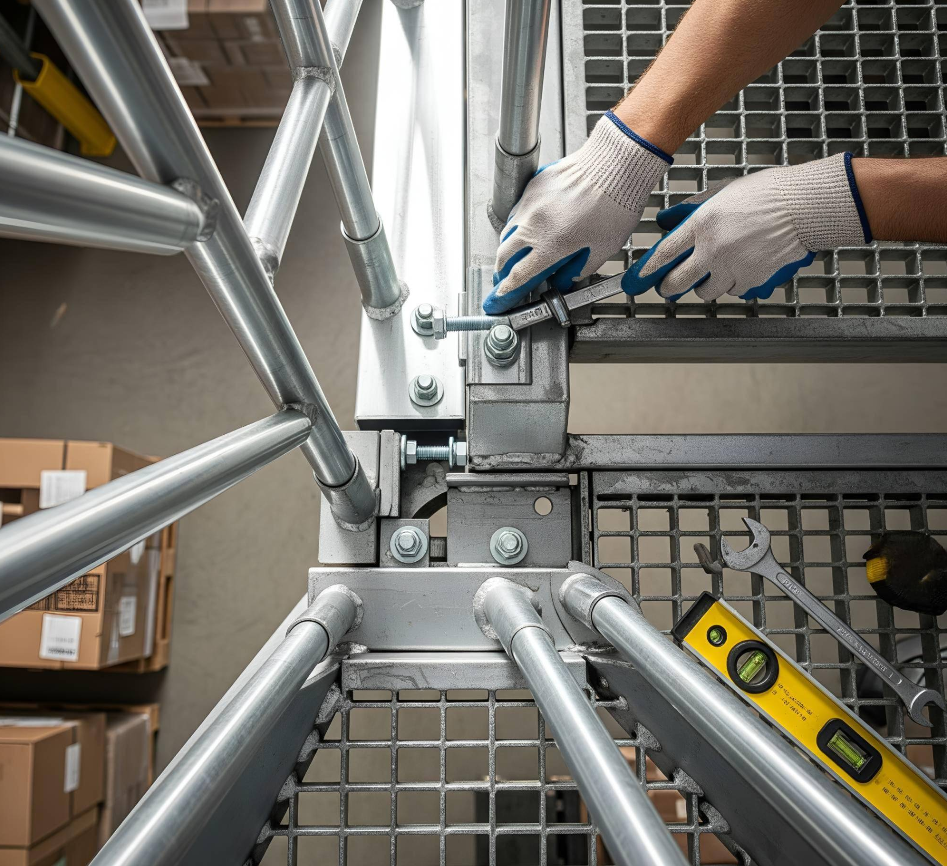Handrails & Balustrades: Blending Safety with Style in Retail Mezzanines

Retail Mezzanines are an effective way to expand floor space, showcase products, and enhance customer experience. While functionality is key, safety must never be compromised. Handrails and Balustrades play a dual role — protecting staff and customers from falls while contributing to the overall design and ambiance of the retail space.
The Importance of Handrails and Balustrades in Retail Mezzanines
-
Ensuring Safety for Customers and Staff
Safety is the primary role of handrails and balustrades:
- Prevent accidental falls from elevated platforms.
- Guide movement along stairs and edges.
- Support compliance with local building regulations (e.g., UK Building Regulations Part K, HSE guidelines).
Well-designed safety features protect your retail environment while creating confidence for visitors navigating mezzanine levels.
-
Enhancing Aesthetic Appeal
Modern retail spaces aim to create visually striking interiors. Handrails and Balustrades can:
- Complement the store’s brand identity through materials like glass, stainless steel, or wood.
- Add transparency or openness with glass panels, enhancing the feeling of space.
- Create visual continuity across different mezzanine levels, connecting upper and lower floors.
-
Blending Form and Function
A well-thought-out design ensures that safety features do not feel intrusive. Consider:
- Glass balustrades for unobstructed sightlines of merchandise below.
- Custom metal or timber handrails for a tactile and decorative element.
- Integrated lighting along handrails to highlight walkways and create ambiance.
-
Supporting Retail Operations
Handrails and balustrades influence the flow of foot traffic:
- Strategically placed railings guide customers through product zones.
- Stairway handrails improve movement efficiency for staff transporting stock.
- Modular or removable panels allow flexible space arrangements for seasonal displays.
-
Maintenance and Durability
Retail environments experience high footfall, making durability essential:
- Use materials resistant to scratches, dents, and wear.
- Schedule regular inspections of screws, joints, and glass panels.
- Clean surfaces frequently to maintain a polished, professional appearance.
Design Tips for Retail Mezzanine Handrails & Balustrades
- Choose Materials Wisely: Mix metal, glass, or wood depending on your brand’s aesthetic.
- Prioritise Visibility: Clear sightlines enhance both safety and merchandising.
- Integrate Lighting: LED strips or embedded lighting improve safety while accentuating design.
- Match Store Style: Ensure that balustrades and handrails complement flooring, fixtures, and overall interior design.
- Comply with Regulations: Confirm all features meet building codes and weight/load requirements.
Conclusion
Handrails and Balustrades in Retail Mezzanines are no longer just safety necessities — they are powerful design elements. By combining durability, compliance, and aesthetics, retail spaces can achieve an inviting, functional, and visually compelling environment.
A thoughtfully designed handrail or balustrade not only protects visitors and staff but also enhances brand experience, guides traffic flow, and elevates the overall retail environment. Ready to elevate your retail mezzanine with stylish and safe handrails and balustrades? Contact our design team for expert solutions.




